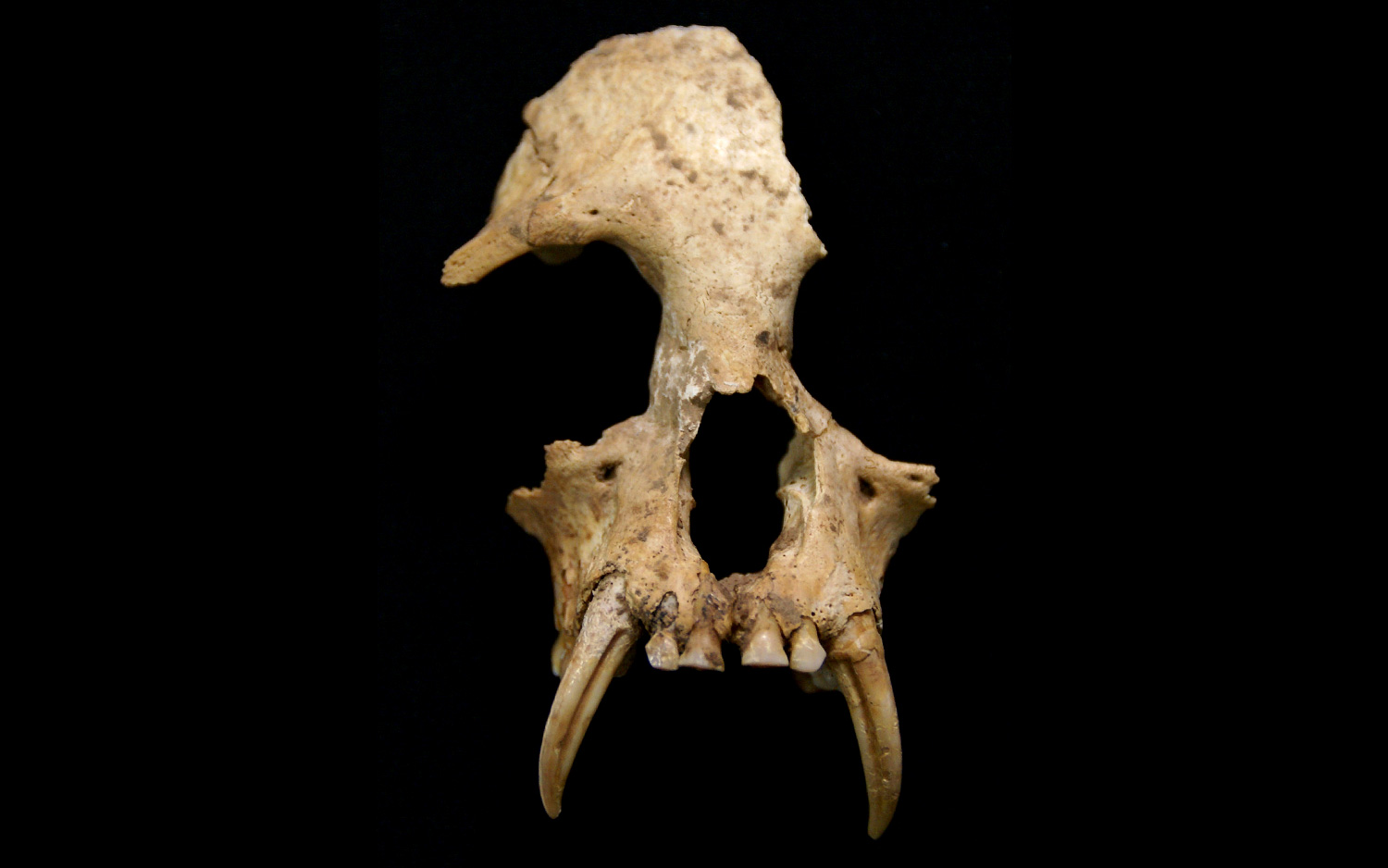Why Archaeologists Were Surprised to Find This Gibbon in a Royal Chinese Tomb

About 2,300 years ago, the grandmother of China's first emperor received an elaborate burial outfitted with a macabre menagerie of buried animals — notably, the remains of an ancient, extinct gibbon that was previously unknown to science, a new study finds.
The discovery is remarkable because the ape — a gibbon the scientists named Junzi imperialis — is the first ape on record to go extinct since the last ice age, the researchers said.
Human activity and environmental factors likely played a role in J. imperialis' demise, said study co-researcher Helen Chatterjee, a professor of biology at University College London. [In Photos: Treasures from 800-Year-Old Tombs in China]
"Our research has shown that in the past, gibbons had a much wider, including a more northerly, distribution across China — but over time, as China has become more developed and humans have expanded, the distribution of gibbons has in turn been dramatically reduced," Chatterjee told Live Science in an email. "Today, gibbons are restricted to the very far south of China."
Because of human-induced (or "anthropogenic") factors, such as building developments, which reduce the size of gibbons' habitat; hunting; and poaching, "gibbons are now one of the rarest primates on Earth," said Chatterjee, who also sits on the executive committee of the Gibbon Specialist Group at the International Union for Conservation of Nature.
Royal discovery
In 2004, archaeologists excavated the tomb attributed to Lady Xia, the grandmother of the emperor Qin Shi Huang (259 B.C. to 210 B.C.), in the Shaanxi province of central China. But the tomb contained more than Lady Xia's burial; it also included 12 pits filled with animal remains, including the skeletons of a leopard (Panthera pardus), a Eurasian lynx (Lynx lynx), an Asiatic black bear (Ursus thibetanus), a crane (Grus), domesticated mammals, birds and, surprisingly, a mysterious gibbon.
There are 20 species of gibbons and siamangs (large, mostly tree-dwelling gibbons) known to science, including six living species that are native to China. But the newfound gibbon's skull, jaw and teeth didn't look like any of these creatures, so the scientists gave it a new genus and species name.
Get the world’s most fascinating discoveries delivered straight to your inbox.
They dubbed the new genus Junzi, the Chinese term for "gentleman," because gibbons were perceived to be noble throughout Chinese history, the researchers wrote. In fact, gibbons were through to channel considerable amounts of chi (energy), and often appeared in ancient Chinese poems, stories and art, Chatterjee noted.
During its lifetime, J. imperialis probably looked similar to today's gibbons. It probably weighed about 13 lbs. (6 kilograms) and ate a mix of fruits and leaves, as well as the occasional insect or bird's egg, Chatterjee said. However, it's anyone's guess what color fur it had, or how its singing voice sounded.
"Sadly, these features don't preserve, so we can't predict what it would have looked or sounded like," Chatterjee said. "But, based on what we know about living gibbons, we see most variation in facial fur color and patterns, and beautiful singing voices which are species-specific."
Ancient pet?
It's common to find the remains of exotic animals in ancient Chinese burial sites, but "this is the only gibbon we know of in a site that is so old," Chatterjee said. [Photos: See Gorillas and Chimpanzees Swinging from Trees]
It's unclear whether Lady Xia kept this particular gibbon as a pet, Chatterjee added. These days, gibbon populations are plummeting, in part because some people decide to keep them as pets, sometimes even removing the ape's large canine teeth because the animals can become aggressive when they're kept in small cages, Chatterjee said.
That's bad news for the gibbons — including the world's rarest primate, the Hainan black crested gibbon (Hainan gibbon), of which there are just 26 individuals remaining on the Chinese island province of Hainan, she said.
Perhaps J. imperialis' story will prompt more protections for endangered gibbons, Chatterjee said. After all, historical records indicate that this enigmatic gibbon went extinct as recently as 300 years ago, the researchers said.
"The Junzi find is a sobering lesson in the devastating effects that humans can have on the natural world," Chatterjee said. "Nature cannot keep up, which is why many species — including several gibbon species — are faced with extinction."
The study was published online today (June 21) in the journal Science.
Original article on Live Science.

Laura is the managing editor at Live Science. She also runs the archaeology section and the Life's Little Mysteries series. Her work has appeared in The New York Times, Scholastic, Popular Science and Spectrum, a site on autism research. She has won multiple awards from the Society of Professional Journalists and the Washington Newspaper Publishers Association for her reporting at a weekly newspaper near Seattle. Laura holds a bachelor's degree in English literature and psychology from Washington University in St. Louis and a master's degree in science writing from NYU.


